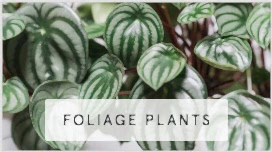Mystery Flowers: World's Most Unique Florals

Mystery Flowers: World's Most Unique Florals
Roses, tulips, and orchids strike a chord with flower lovers around the world. For all their inarguable beauty, however, they cannot be described as rare or otherworldly. Stunning, yes, but not quite difficult to trace. There are, however, distinctive varieties of each that fall under the rare category.
They join legions of other flowers that are considered unusual, difficult to find, endangered, and downright remarkable. Some are known for dubious distinctions, like their gargantuan sizes or their off-putting odors. Others boast odd shapes and structures that lend them an appearance more akin to marine life. And others are so extraordinary that they bloom just once every few years, or in other cases, thousands of years apart.
The world’s most unique florals are astounding in their beauty. It may not necessarily be an outward sort of beauty, the type that draws people in to admire a daisy or a lily. But there’s an innate sense of wonder associated with flowers whose histories are rich and whose rarities make them all the more compelling. These flowers are among the most unusual and distinctive in the world.
Juliet Rose
There are roses, and then there’s the Juliet rose. While it’s now available for purchase, its story is awe-inspiring. It’s often referred to as the “£3 million rose” because that’s precisely how much it cost David Austin, a renowned rose breeder, to create. Its debut at the 2006 Chelsea Flower Show stunned the floral community.
Its soft apricot-meets-peach tone alone sets it apart, but the tea rose is also unique and special in its appearance. Upon blooming, the petals unveil distinctive clusters in the heart of the flower. Its rich, textural finish lends the flower immense beauty. It also boasts a heady fragrance and, for growers, is especially appealing because it is resistant to disease.
Kadupul Flower
Few things described as “priceless” actually fit the description. Yet it applies fully to the Kadupul flower, a flower so unusual that it doesn’t even have a price tag. Derived from Sri Lanka, it makes its appearance infrequently. That it blooms so rarely makes it particularly noteworthy, but its limited lifespan also contributes to its story. When picked, the Kadupul flower tends to wilt almost immediately.
This short life expectancy contributes to its wonder, as it takes an entire year to bloom — yet the flower itself lasts for no more than an hour once picked. What makes it so popular if its life expectancy is so short? It’s often attributed to its calming fragrance, the source of such placidity and tranquility that it’s inspired countless perfume blends through the years.
Night-Blooming Cereus
Shrouded in mystery, the night-blooming cereus is a showy plant that blooms with enormous white flowers roughly the size of a palm. While its outward beauty is obvious — it’s impossible to miss the crisp hue against its native dusky Arizona backdrop — the flower also commands attention for its extremely infrequent blooming cycles. Known as the “queen of the night,” the night-blooming cereus blooms just once a year at dusk and is gone by sunrise.
The scent of these flowers is so enchanting that many claim it can be smelled from a great distance. The great blooming event typically occurs in June or July and truly is a spectacle to behold. Flower lovers travel from far and wide to witness the cacti as they simultaneously bloom, producing a wondrous canopy of white. Usually, groundskeepers cannot determine blooming day until several hours beforehand, so last-minute planning is often necessary to witness the event in person.
Rothschild’s Slipper Orchid
Rare is the orchid that commands upwards of thousands of dollars per stem. Yet Rothschild’s Slipper fits into a category all its own. It’s native to one location only: the Kinabalu National Park in Malaysia. While the park is home to some 1,200 different orchid species, the dazzling Rothschild’s Slipper stands out for its extreme rarity. It was discovered in 1987 on the slopes of Mount Kinabalu, known as the only spot in the world where it grows.
It’s so scarce that it is a protected flower in Malaysia, and it’s illegal to pick it. Spotting it for sale can mean only thing: it was sourced through unsavory means. Another noteworthy trait is its lengthy blooming cycle. With its lengthy black and yellow petals, this eye-catching flower takes up to 15 years to bloom.
Gibraltar Campion
Oddly shaped petals that seem to quirkily clutch at one another in the air lend the Gibraltar campion its one-of-a-kind quality. Once upon a time, botanists believed the plant was completely extinct. Yet the rare plant was found in 1994, growing in all its delicacy on the Rock of Gibraltar. Its moniker is fitting, as this is the only place in the world where it can be found.
The flower has since been propagated, so casual admirers can witness its beauty in person at London’s Royal Botanic Gardens, Kew. However, both the Gibraltar and London locations boast few of these impressive flowers. That they bloom only in the evenings and possess a mild fragrance contributes to their peculiarity.
Ghost Orchid
Those outside of botanical circles might be familiar with the ghost orchid name. This unusual flower gets its name from the wispy light petals that seem to float in the air. It’s considered an especially rare flower for the fact that it depends on elevated temperatures and high humidity levels to thrive. It’s next to impossible to cultivate the ghost orchid anywhere but its natural homes of Florida, the Bahamas, and Cuba.
Even in these habitats, the distinctive flower only blooms for a period of three weeks. If you’re visiting anytime between April and August, you may have the opportunity to witness the plant in all its glory. What’s even more fascinating about this unusual growth is that it possesses no leaves, does not rely on photosynthesis, and instead depends on neighboring plants for its energy. You’ll know it’s in bloom in your presence if you can smell a soapy aroma in the air.
Chocolate Cosmos
What makes chocolate cosmos so unique? The clue is in its saccharine name. The flower produces a heady, almost hypnotic chocolate fragrance that is rich and true. When it’s in bloom, there’s more than just a scent that fills the air. A glance at these lush, reddish-brown flowers can be captivating for their incredible beauty. They’re capable of growing over two feet tall and are native to Mexico.
However since they don’t produce seeds and aren’t found in the wild, chocolate cosmos are only cloned in the modern world. As a propagated plant, it’s incredibly unique, as the areas where it does grow are protected from the public. Moreover, the plant only blooms in the evening towards the end of the summer season.
Corpse Flower
Perhaps by virtue of its name, the corpse flower is known primarily for its atrocious smell. In fact, the odor is so harsh and strong that the plant tends to attract only insects. It’s often been described as an aroma similar to rotting meat or flesh. That alone may turn off some botanical enthusiasts, but the flower’s appearance also sends a spine-tingling message.
It’s capable of growing nearly 12 feet tall and is considered to be one of the world’s largest flowers. It has no roots or leaves, nor does it feature a stem. It possesses only a single green petal that resembles the color of lettuce. The inside of the petal unfurls delicately, belying the flower’s noxious odor. The interior is rich in burgundy and features a cone-like silhouette. This unusual flower is located solely in Indonesian rainforests and blooms only every few decades. Despite its unappealing appearance and scent, people flock to witness this rare event.
Middlemist Red
Among the rarest flowering plants in existence is the Middlemist Red. Its history is tied to John Middlemist, who brought the flower from China to the UK in the early 19th century. While he donated it to Kew Gardens, it was eventually cultivated nearby — a relief, as it disappeared completely from its native home of China shortly thereafter.
The flower is notable for its immense beauty. It resembles a rose and features vibrant pinkish-red petals. The camellia flower is now completely extinct, save for two exceptions: a single Middlemist Red that grows in a New Zealand botanical garden and one that thrives in an English greenhouse. The flower is the source of some mystery, however. When John Middlemist arrived in the UK, he sold a few to the general public. It’s entirely possible, then, that there may be some Middlemist Red flowers growing in gardens completely unknown to their owners.
From the attractive to the unseemly, the heavenly scented to the undesirably scented, and the infrequent to the costly, there are rare flowers in abundance all over the world. What sets them apart is obvious: they are justifiably unusual, with traits that make them almost mystical in quality. They are a source of continuing inspiration for flower lovers, but even for the passing admirer, they hold an almost spellbinding allure.












